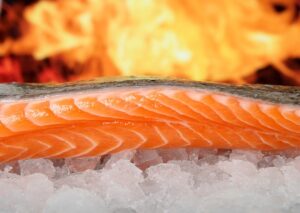Introduction
When all hydrogen bonds in a protein are disrupted, it can have a significant impact on the protein’s structure. Hydrogen bonds play a crucial role in stabilizing the different levels of protein structure. By breaking these bonds, the protein’s overall structure may be altered, potentially affecting its functionality and stability. In this article, we will explore the level of structure that will be preserved when all hydrogen bonds in a protein are disrupted.
Impact on Protein Structure
Proteins are complex molecules made up of amino acids, and their structure is essential for their proper function. The structure of a protein can be described at four different levels: primary, secondary, tertiary, and quaternary.
Primary Structure: The primary structure of a protein refers to the linear sequence of amino acids. Disrupting hydrogen bonds in a protein will not directly affect the primary structure, as it is determined by the sequence of amino acids in the protein chain.
Secondary Structure: Secondary structure refers to the local folding patterns within a protein. It is primarily stabilized by hydrogen bonds between the backbone atoms of amino acids. Disrupting these hydrogen bonds can lead to the loss of secondary structure elements such as alpha-helices and beta-sheets. However, some residual secondary structure may still be preserved due to other non-covalent interactions, such as hydrophobic interactions or van der Waals forces.
Tertiary Structure: Tertiary structure refers to the overall three-dimensional arrangement of a protein. It is primarily stabilized by a combination of hydrogen bonds, disulfide bonds, hydrophobic interactions, and other non-covalent interactions. Disrupting all hydrogen bonds in a protein can have a significant impact on its tertiary structure, potentially leading to unfolding or denaturation of the protein.
Quaternary Structure: Quaternary structure refers to the arrangement of multiple protein subunits in a larger protein complex. Disrupting hydrogen bonds can affect the interactions between subunits, leading to the dissociation of the complex or the formation of alternative interactions.
Preservation of Structure
While the disruption of all hydrogen bonds in a protein can lead to significant changes in its structure, it is important to note that some residual structure may still be preserved. This is due to the presence of other stabilizing forces, such as hydrophobic interactions, van der Waals forces, and covalent disulfide bonds.
These alternative interactions can help maintain some level of structure, especially in the absence of external denaturing agents. However, it is important to recognize that the disruption of hydrogen bonds can have a profound impact on the stability and functionality of the protein.
Conclusion
In conclusion, when all hydrogen bonds in a protein are disrupted, the preservation of its structure will depend on the specific level of structure being considered. While the primary structure remains intact, the disruption of hydrogen bonds can lead to the loss of secondary and tertiary structure elements. However, some residual structure may still be preserved due to other non-covalent interactions. It is important to consider the overall impact on the protein’s stability and functionality when hydrogen bonds are disrupted.
References
– Alberts, B., Johnson, A., Lewis, J., Raff, M., Roberts, K., & Walter, P. (2002). Molecular Biology of the Cell (4th ed.). Garland Science.
– Berg, J. M., Tymoczko, J. L., & Gatto, G. J. (2015). Stryer’s Biochemistry (8th ed.). W.H. Freeman and Company.











